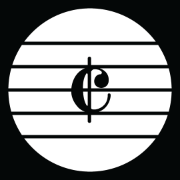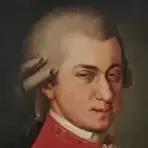Leaderboard
Popular Content
Showing content with the highest reputation on 03/30/2023 in all areas
-
I have only seen that kind of tremolo in old editions of scores. Personally, I like how it looks better than writing out all the notes, though it's far from standard today; my piano teacher didn't even recognise them in her old clementi sonatina book.1 point
-
I have the same thought as Henry. Sonata una quasi fantasia is a good suggestion.1 point
-
A good programmatic episode, if perhaps conventionally tonal but really needs to be heard/seen in context. Is it part of a planned larger work? This piece works well for 3 minutes but any longer and it would need more pronounced development - possibly a build up to a climax and variation in dynamics and orchestral density. However looking at soundcloud's "sound wave" across the bottom it goes on at a standard mezzoforte throughout. As I say, for 3 minutes that's ok. Another point is that the instrumentation is for the most part dense so it sounds muddy here and there. Otherwise - great.1 point
-
Hey @ComposedBySam, Thanks for providing thr score! With the score I will address to the enharmonics. In b.16 and 18 LH I would use D sharp there. In b.47-51, will you use D sharp minor and G sharp minor there to keep the key same as before as in b.43? Henry1 point
-
I think Sonata una quasi fantasia a good name for your piece (and your sonatas in general). In this way at least the 1st mov doesn't need to be in sonata form as in Beethoven's two sonatas in the same name (no.13 and 14 the Moonlight).1 point
-
Hello Henry, Great review, as always! I am amazed by your reviewing capacity. How do you find the time to do all this work? It is admirable. Back to some of your issues: About the sonata form, I agree with you (see my reply to Carl). Funny that you mentioned b. 71. I had exactly the same feeling as you described. Is this repetition going to be boring? But then ….. I left it, since the surprise comes a few seconds later. The theme in b.101 is indeed reminiscent to the theme in Schubert´s D 960 sonata, as you mentioned but there are some distinct differences in construction and functionality. Schubert used this theme as a vehicle for a series of modulations (incredibly beautiful). In my case, the left hand melody notes starting in b. 101-104 followed by the right hand melody notes of b. 105 -118 constitutes an essential melodic frame of the piece, which is recurring many times (in different forms). There is also a difference in the arpeggio and bass notation structure, in line with the functionality. Although these progressions are probably not in accordance with standard rules, I do not perceive them as unpleasant or jarring. I often use unusual transitions/modulations and of course, not everybody will like these constructions. But that is the freedom we have as composers- to jump a bit away from the conventions. I agree that I should review more music of the other members. The problem is that I am a very slow reviewer and I do not have the available time for it . It can take me more than a day to provide a constructive feedback. But I will start to review some selected pieces. Thank you very much again for your comprehensive and constructive inputs! Johan1 point
-
Hello Carl, Thank you very much for your extensive feedback, and I am really glad that you like the piece. But reading your comments, I also realize that this piece is too disorganized to be called a sonata. All your arguments are absolutely correct! (and Henry has come to the same conclusion). I am therefore considering to change the title of the piece into something else, for example: “Piece for piano in A-major” (maybe you have a better suggestion ?). In this way, I would not be restricted to follow the formal rules of the sonata form. I had planned to write a second and third movement, but I could skip this, or perhaps write these movements as separate pieces. Again, I very much appreciate your excellent review. Thanks a lot!1 point
-
Hi @Henry Ng Tsz Kiu, Thanks for the reply! Yes, there is a solo clarinet. I pulled the "classical symphony" template straight from musescore, and forgot to separate the clarinet from the rest of the orchestra. This is a great idea! I will let the solo clarinet play the opening theme in the second section. I might proceed the piece by transposing to A major or relative minor, whichever sounds best... thanks for the useful suggestions! Saltypenguin1 point
-
Once again, Henry is badass and recorded this piece. Check out his music if you haven't already, I'm sure he's reviewed something of yours. Youtube: https://www.youtube.com/channel/UCvJlL2flTJzwQYwK0QhE1SA1 point
-
I agree, I felt like I could have maybe strayed away from the pattern here and there. I was going for a Bach prelude in C vibe with this, but I love the suggestion. Always good to hear your input, thanks for listening 🙂1 point
-
1 point
-
Hey @Saltypenguin, Is the solo clarinet in here? If yes you should separate it for a single staff, if not than it's fine. I see this is in Classical Concerto style. Will you use the double exposition noramlly used in Classical concerto? The clarinet passage is very lovely. After the pause I think it's the time for transition to the dominant A major with the interaction between the orchestra and solo clarinet. You can probably use the opening dotted rhythm as the hook for transition! Henry1 point
-
Hi @pateceramics, Thanks for your review! I do want to have a contrast between the first two, like in the second I want to have the inspirational power denied since the problem won't be solved only with inspirations. The real dark power will be in the 4th mov and solution in the 5th, cunningly. I don't know why but I really want to try the texture of the finale of Chopin's 2nd Piano Sonata, and I am happy you find it work! Yes the accents are crucial here. Turning down the speed to 75% can be "dangerous" as said by the "Quickest Violinist in the World", since you will find more slips there! The shift is a direct quotation from Beethoven's op.111 as I just want to have that here, don't know why. The Db minor surprise can be regarded as the proper announcement of the key which will be the main hurdle of the sonata and the tonic in the 4th mov. That really takes me much time to practice and record, but I am happy I have made it. Thank you for your compliment! Wish I can have the 3rd mov's recording asap. Henry1 point
-
I really like this, it would make a perfect film score for a high seas adventure. It reminds me of those golden age Hollywood swashbuckling film scores by Erich Korngold. I would say that I get more adventure out of it than a menacing doomed voyage though. Maybe if you expanded a little, you could add a darker passage to really nail that doomed storyline. Still I found it to be a very enjoyable!1 point
-
Hi @ComposedBySam. For me I won't say this nocturne sad. I think the beginning is ominous and it's dark throughout. I love the middle section more with the more frequent change of harmonies. The retransition back to A minor in 1:50 is quite fascinating with the G sharp minor having an interrupted E major then re-interpreted as the dominant of A minor. If the score is provided here I am sure it's easier to have constructive feedback! Henry1 point
-
This is a nicely polished piece, and like the other commenters, I appreciate how the sophisticated use of harmony keeps it interesting. The dynamics really lift it nicely as well. If it were mine, I think I would have thrown in a few other elements to amp up the drama, without changing the overall pattern. Maybe some accents in a forte section? But it seems like one of your main goals was a smoothly flowing character, so maybe not... I like it, and I agree that it is always a good challenge to work within a set of restrictions to force yourself into novel solutions. 🙂1 point
-
It is nice, but I feel like your main focus in development is not motivic but harmonic. I think it would be much more lucid and musically satisfying if the melody took the lead and determined the changes in harmony and not the other way around. Very often it seems like there's nothing interesting going on while you go through the motions of changing chords. It's important to not forget what catches and holds the listeners attention in music and harmonic changes alone just don't cut it for me. Also, it is very often difficult to hear the melody. I think, being the most important part of the music, it should be brought out in high relief in comparison to other notes which aren't as important. I think it is important to balance the less-indispensable elements of the music from the indispensable ones - to create a hierarchy of importance in the loudness of the various elements. Thanks for sharing and I hope to hear more!1 point
-
Hi everyone, I began a string quartet between the 2nd and final movement of my piano concerto to take my mind out of it. This is the first time i compose seriously for string quartet and would like to know your thoughts... There is only the exposition of the first movement1 point








.thumb.png.8b5b433a341551e913a34392660bc95b.png)
